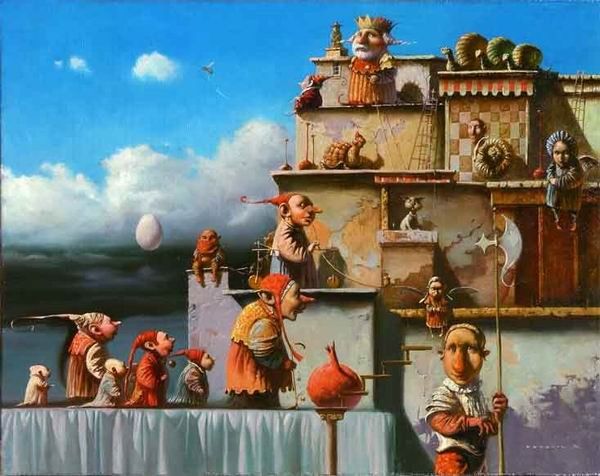
PRINCIPIA SCACCHORUM, Part 9: Six+ Effects of Every Single Chess Move
A chess move is not an atom of Chess Universe. There is something even smaller and simpler than a single move. It is the power effects that pieces are producing (due to [1a] and [1b] in the list below). Every move, in every phase of game, shifts the balance of power on the board thanks to these two power effects.
To a chess player, a deep, subliminal understanding of the two is as indispensable as the rules of grammar are when we speak and write.
Let us have a look at Six Plus move effects , after just reminding you first of our Chess Basics list, discussed before (in Part 6, Part 7, and Part 8), that is given here for your reference. This is our Ten, or so, Chess Commandments.
CHESS FORCE BASICS CHART
After checking below, I very much doubt you would still have the impression that the moves represent the key driving force in chess.
I don’t want to force you into it, just wanted to refocus your attention - and the attention of the beginner in the critical early period of learning - from the moves, back onto the chess vital force, uhm the Force, with a capital F! Remember how the ancient chess simulated the use of bows and spears. Obviously, it was not the very act of firing an arrow, or throwing a spear that was doing harm to the enemy. It was the arrows and spears themselves as the weapons of force.
1) CHESSMEN
1A) Power/Control effect =exercising force
1B) Body effect =force reductor
1M) Mobility =force shift facilitator
2) RELATIONSHIPS with Friends and Enemies (remember A-P-R-I-kilL)
2A) Attack (incl. threat of attack, 2a/t and multiple attack, 2a/m) =use of force against enemy
2P) Protection/Defense =collaborating force
2R) Restriction of movement, either via 1A, or 1B =suppressing-enemy-movement force
2I) Interposition/block/cover (pin) =blocking enemy force against a senior friend
2K) Kill (capture) =liquidating force
3) PURPOSE/Collective direction =team’s strategic flow of force
Now, suppose a piece is making a move from square A to square B, with or without enemy capture. How does the move alter the position?
SIX+ EFFECTS OF A SINGLE MOVE
- it has cleared the original square A (which is now accessible to friends),
- it is going to occupy the destination square B (which is now blocked for friends),
- as it has vacated A, it is going to extend the radius of action of other pieces, by clearing path along the four lines for them (a file, a rank, and two diagonals that pass through A),
- it is going to occupy B, therefore closing the four lines at B for other pieces, thus reducing their activity.
- the piece is going to exercise a new influence from square B (via power [1a], and/or attacking [2a] effect] over new territory and pieces,
- it has lost some impact on the previously controlled space and pieces from A.
In addition to these six elementary effects, there is also another move product that doesn't come with each move, namely, forcing opponent's pieces to move. That is how you impose your will onto the opponent. You simply drive an enemy to an inconvenient square where it would be even more vulnerable to further attacks. It can be done in two ways: a) enemy chase by using brutal raw attack [2a], or b) piece sacrifice.
VII. Direction of enemy movement
And in case of capture, there is a drastic change in the material balance, whereby the entire power influence of the captured piece vanishes from the field (as it goes back to the box, till next battle).
VIII. Material advantage
We don’t want to force the beginner into all this mechanically. Like FIDE does impose on kids in her Chess in Schools manual, “Chess: The First Year of Study.” It is only on p. 68 that the word attack, which exemplifies the key chess concept (of force, of course) appears for the first time. Without any explanation though. Then, next instance of attack on p.92, in an exercise that begins like, "Read carefully and remember: The King cannot move onto an attacked square."
No, we are not going to do like that. We have just redesigned the Square One for a natural acquisition of the chess basics through playing simple mini games!
Next time, an example from a GM game where the Uniting Force herself explains what goes on on the battlefield in her own terms. She explains the effects of Power, of which moves are just faithful servants in the War of Chess.
------------------
The picture shows Magnetic Lines of Force
Tags: chess education, chess teaching, chess learning, chess basics, chess force, complex systems
